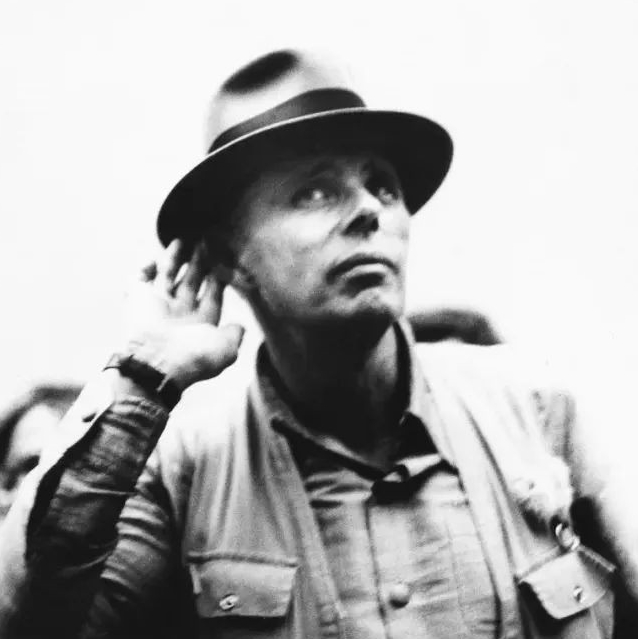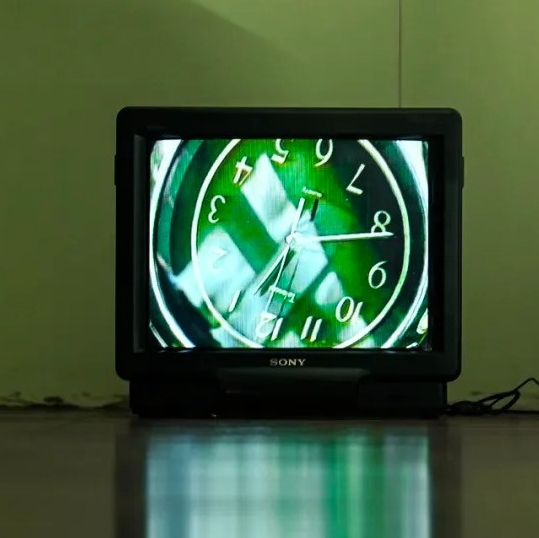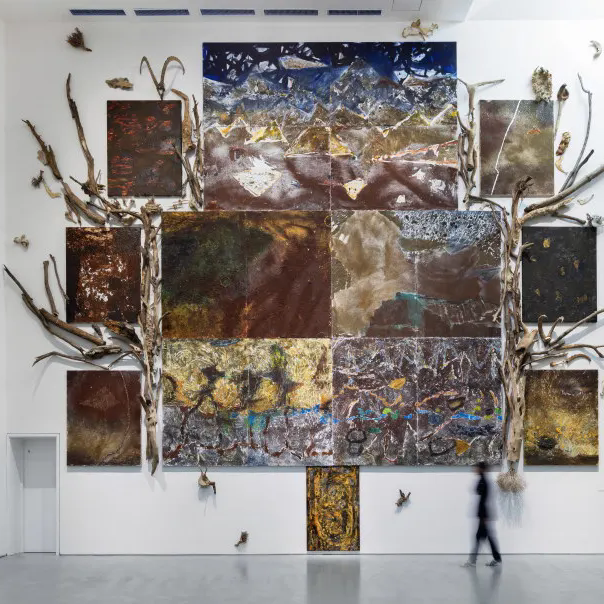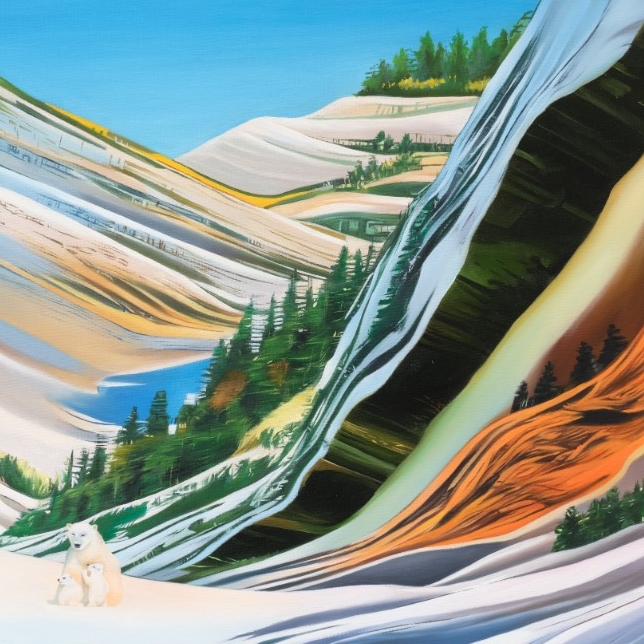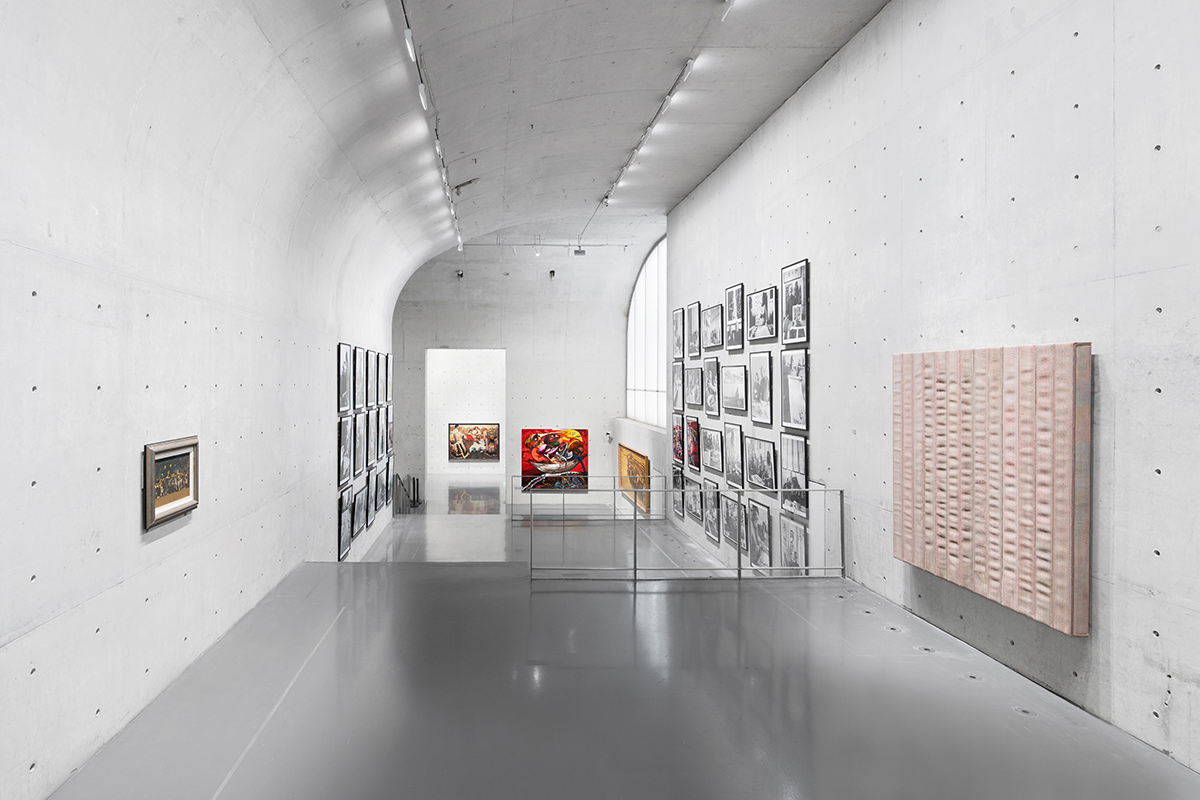 Exhibition View
Exhibition View
The Long Museum's tenth anniversary coincides with a time when we have been unable to be in the world. The Covid pandemic has led to societies around the globe being in confinement. This exhibition is conceived in response to our yearning for social encounters and for being in the world - all through the prism of the artist’s eye. The human figure dominates. The assembled paintings and installations encompass artists’ self-portraits, family albums, strangers in surreal scenarios, groups gathered in social activities.
Being in the World takes us on a journey through four ‘episodes’ each themed after one work. Episode One focuses on the single figure, on artists’ self portraits and the relation between artist and model. The paintings in Episode Two capture the dynamics of families, friends and lovers. Episode Three features depictions of groups who may be strangers or colleagues, workers or revellers.
Episode Four takes us into the realm of abstraction where artists use colour, light and form to generate sensory environments. We move from looking at the body from outside, to occupying the body from inside, in order to encounter the material reality.
There may be one dominant subject – the human – but there are a multitude of aesthetic approaches. Ranging from collage to hyperrealism, they reflect major movements in modern and contemporary art.
Episode One
Crystal Landscape of the Inner Body, 2000
Chen Zhen
A ‘crystal landscape’ of glass organs is a self-portrait by Shanghai artist, Chen Zhen. He suffered an incurable illness but found catharsis by imagining his organs as shining and eternal. This poignant work opens a section dedicated to the psychic, formal and narrative potential of the portrait.
The human head is richly symbolic – it supports the crown, the dunce’s hat, the veil, all signifiers of status. The head leads, judges or controls. Formally it is a sphere on a plinth, with planes and hollows. The face is a medium for expression but can also present an inscrutable mask. It can stir memories, longing or regret.
Artists’ self-portraits might just say ‘I am the artist’, a bold assertion for women or artists of colour who have been sidelined in art history. The head, torso or full figure may be a way of exploring colour, contour and line. For some the self-portrait is a study in mortality. The body may also be a vehicle to the inner self, an arena of feeling or of the unconscious.
Episode One also features many portraits of others. They might be studies of models in the studio or a stranger the artist has seen or imagined. Their clothing, attitude and surroundings give us clues to their personal stories.
Some figures are steeped in mystery. We might interpret them as symbols of longing or alienation; or characters on the brink of a thrilling adventure!
Episode Two
The Last Great Adventure is You, 2014
Tracey Emin
Written in light is a love letter by the British artist Tracey Emin. This artist grew up in a seaside resort that was once ablaze with neon signs. Instead of advertising a bar or entertainment, this sign addresses a lover or a friend, in a public affirmation of love.
This section of the exhibition explores intimate human relations. A relationship can be between parent and child, siblings, lovers, friends or enemies. The connection may be momentary such as an encounter between strangers. There may also be a failure to connect – within the closeness of two people there may be an unbridgeable chasm.
Relations generate drama – parental love or family strife; sexual desire fulfilled or frustrated; the platonic exchanges of friendship; the charge of unease or fascination excited by a stranger; conflict between enemies. A binary structure also offers artists a tableau, where two or three forms become compositional elements held in balance or pitted in opposition.
Episode Two stages a series of encounters – between real people or emblematic figures. We recognise the comfort, the attraction and the tensions of being with those who are close to us. Whether the scene depicted is in China or from the rest of the world, this relational dynamic is universal.
Episode Three
Civil Tapestry, 2016
Theaster Gates
African American artist Gates recycles the discarded hoses of the Fire Department in his native city of Chicago. They are symbolic of the high-pressure hoses used by the police against civil rights protestors in the 1960s. He has stitched them together to symbolically unify a community who suffer economic and political segregation.
Civil Tapestry represents the concept of individuals coming together to create a civic body united by identity, place or ideology. The works in this section show the universal aspects of social interaction.
They include depictions of artistic, rural, industrial or artisanal workers. There are paintings featuring individuals brought together by learning, or through attending an event. Other groups appear united through cultural acts such as joining a parade; or leisure activities such as playing snooker. There are also depictions of those bound together through their ethnicity or class.
Group tableaux can be epic in tone and scale – they may be festive or memorialise a lost way of life. Images of dancers linked through gesture also create joyous visual compositions. The paintings in Civil Tapestry often depict communities at a moment of societal change so entering the genre of history painting.
Episode Four
Infinity Circle, 2018
Raphaël Fenice
We look into what appears to be a circular mirror. Tiny lights spiral through a dark glass to lead our eye down an endless tunnel of light. Instead of finding our reflection in the mirror, French artist Raphaël Fenice has given us a glimpse into infinity.
Infinity Circle explores how the phenomenal world of light, space, matter and structure impact on perception. Artists may use simple geometric forms such as the cube or the sphere; but they repeat or combine them with light and colour to generate a feeling of transcendence.
The works here also use pure colour or mark-making to evoke the sensory experience of the earth, sea or sky. They evoke the sensation of looking to a horizon, feeling the heat of the sun, or watching twilight, through epically scaled abstract paintings. Some are airy and ethereal - others rough and tactile as if translating the surface of a rock or tree bark.
The final episode of Being in the World moves away from identification with a figure; and from the stories generated by group scenarios. The art here is abstract, phenomenological, engaging us in a journey through space and time. It takes us to the edge of the sublime.
Exhibition View



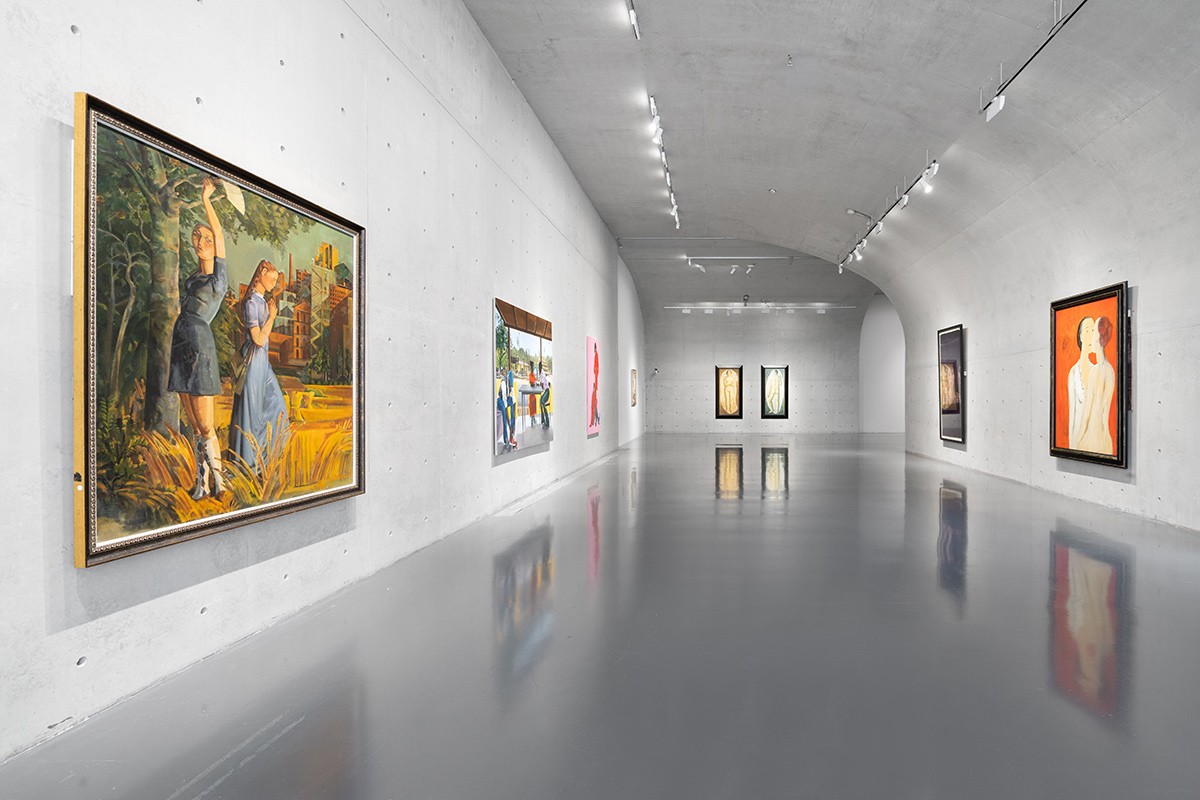




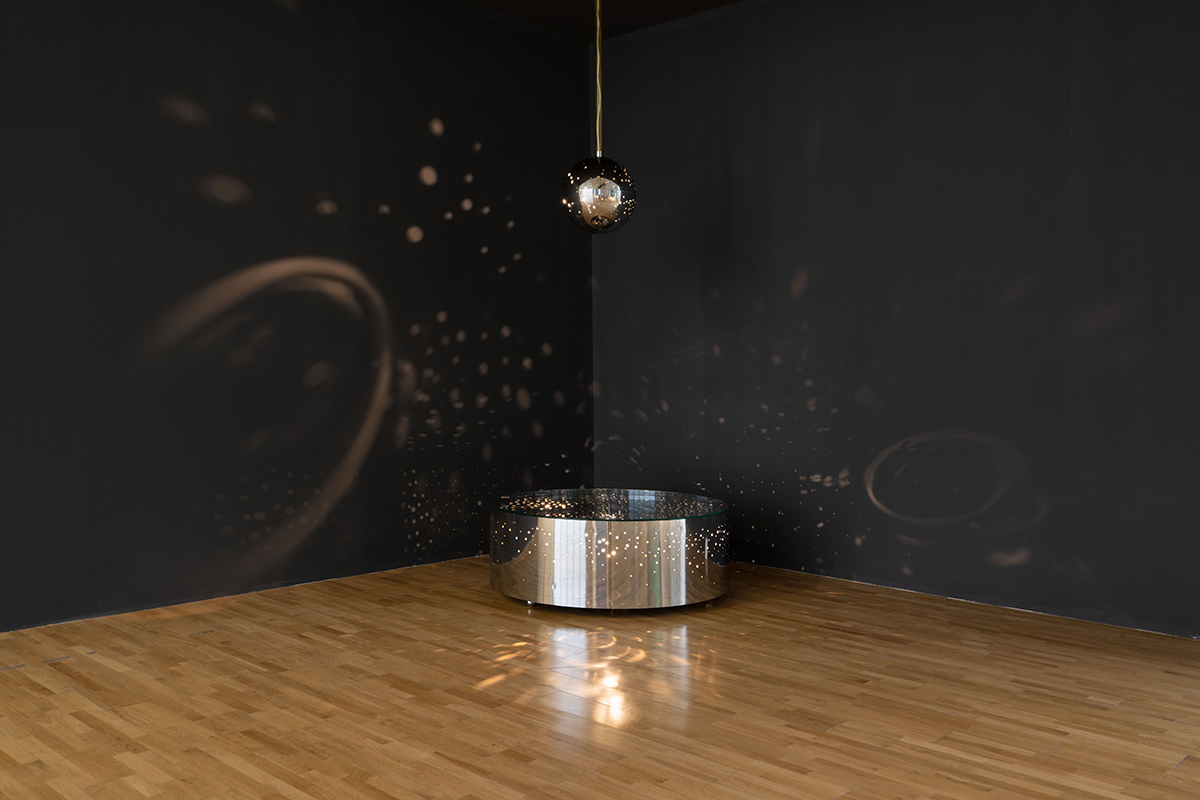

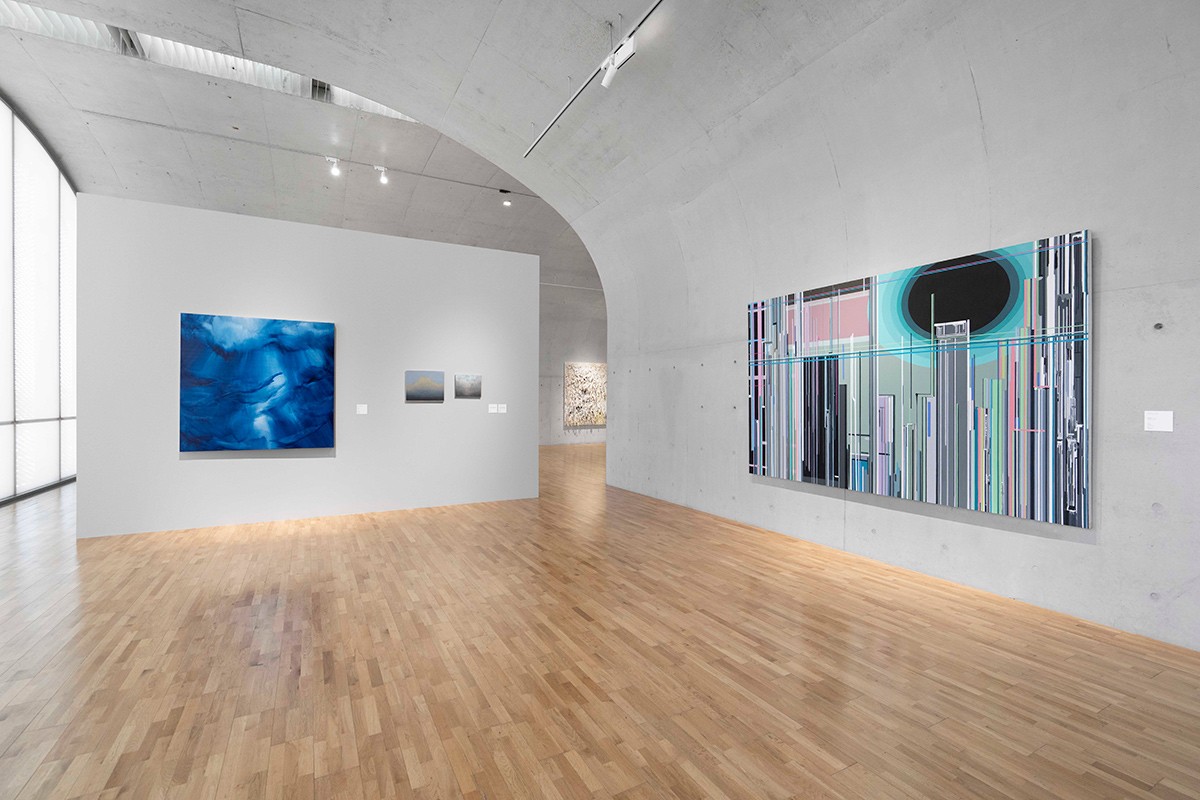

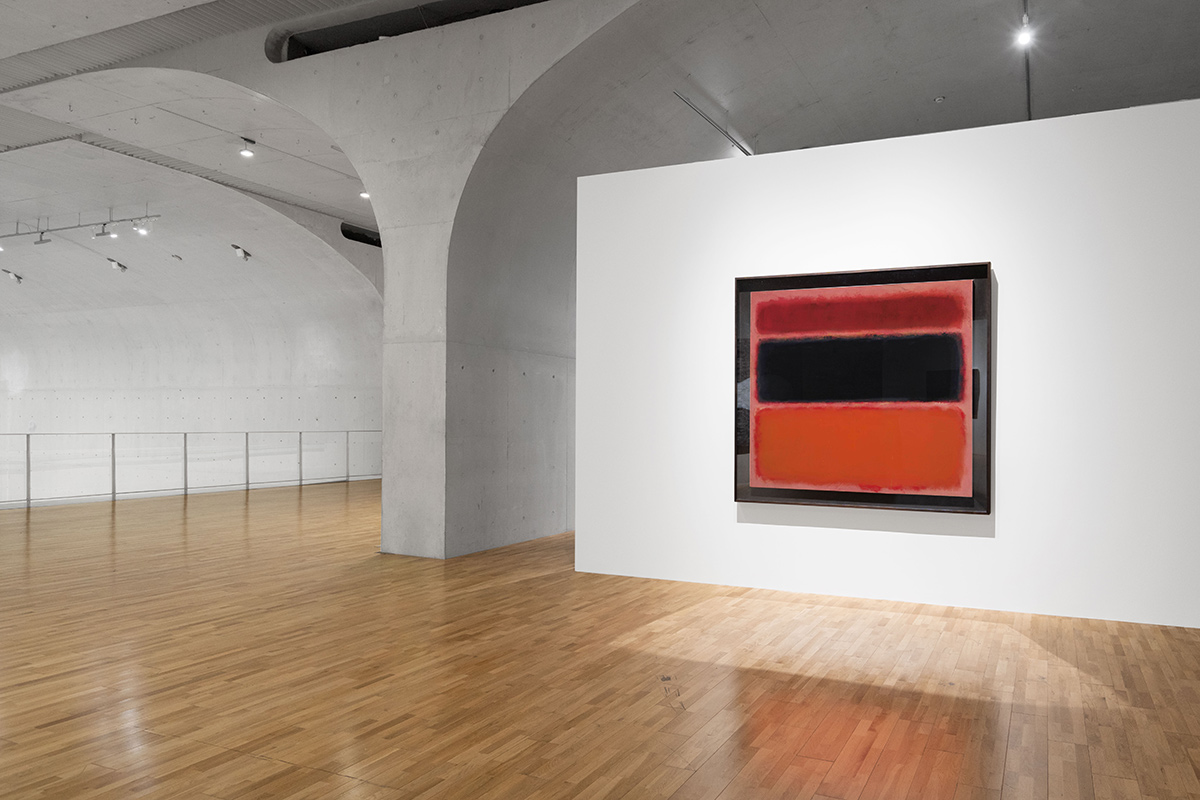

 List of artists
List of artists
★Listed in alphabetical order by artist's last name
A
Ai Xuan
Rita Ackermann
Marina Abramović
Mamma Andersson
Lucas Arruda
B
Tony Bevan
Michaël Borremans
Huma Bhabha
Sarah Ball
Bae Yoon-Hwan
C
Chao Ge
Chang Qing
Chen Zhen
Miriam Cahn
George Condo
Chang Shuhong
Cheong Soo Pieng
Chen Danqing
Chen Fei
Chiu Ya-Tsai
John Currin
Chua Soobin
D
Ding Yanyong
Duan Jianwei
Marlene Dumas
E
Mimosa Echard
Tracey Emin
Mandy El-Sayegh
F
Léonard Tsuguharu Foujita
Fei Yifu
Maria Farrar
Dan Flavin
Raphaël Fenice
G
Paul Gauguin
Antony Gormley
Geng Jianyi
Guo Runwen
Theaster Gates
H
He Duoling
Hu Shanyu
Grace Hartigan
Han Young-Wook
Shara Hughes
Thomas Houseago
Jenny Holzer
Barkley L. Hendricks
Hu Jiancheng
David Hockney
Huang Rui
Loie Hollowell
Shirazeh Houshiary
I
Tetsuya Ishida
J
Rashid Johnson
Ji Xin
Jin Shangyi
Rachel Jones
K
Yayoi Kusama
Izumi Kato
Scott Kahn
Alex Katz
L
Luo Zhongli
Li Tianyuan
Luo Erchun
Li Jikai
Liu Xiaodong
Lee Ufan
Liu Wei
Liu Wei
Lee Jin-Woo
Lee Kun-Yong
M
Amedeo Modigliani
René Magritte
Ana Mendieta
Kerry James Marshall
Mao Yan
Zanele Muholi
O
Ouyang Chun
Toyin Ojih Odutola
P
Pan Yuliang
Pang Maokun
Gatot Pujiarto
Otto Piene
Q
Qi Zhilong
Qin Yifeng
R
Neo Rauch
Mark Rothko
Gerhard Richter
S
Su Tianci
Shen Ling
Song Kun
Shen Xiaotong
Shih Yung Chun
Amy Sherald
Shang Yang
Dana Schutz
Jenny Saville
T
Tang Yunyu
Emmanuel Taku
Wolfgang Tillmans
U
Peter Uka
Ulay
V
Adrián Villar Rojas
W
Wang Chuan
Wang Huaiqing
Wang Yin
Wang Qiang
Wei Ershen
Wei Rong
Wang Jinsong
X
Xu Mangyao
Xie Nanxing
Xiong Yu
Xu Beihong
Xia Junna
Xia Xiaowan
Y
Yang Liguang
Yan Li
Yu Hong
Yan Lei
Yang Feiyun
Yang Fudong
Yin Zhaoyang
Yunizar
Yu Youhan
Z
Zhang Qianying
Zhang Jian
Zhang Xiaogang
Zhou Chunya
Zeng Fanzhi
Zhang Enli
Zhao Shou
Zhao Zhao
Courtesy of the Long Museum.



